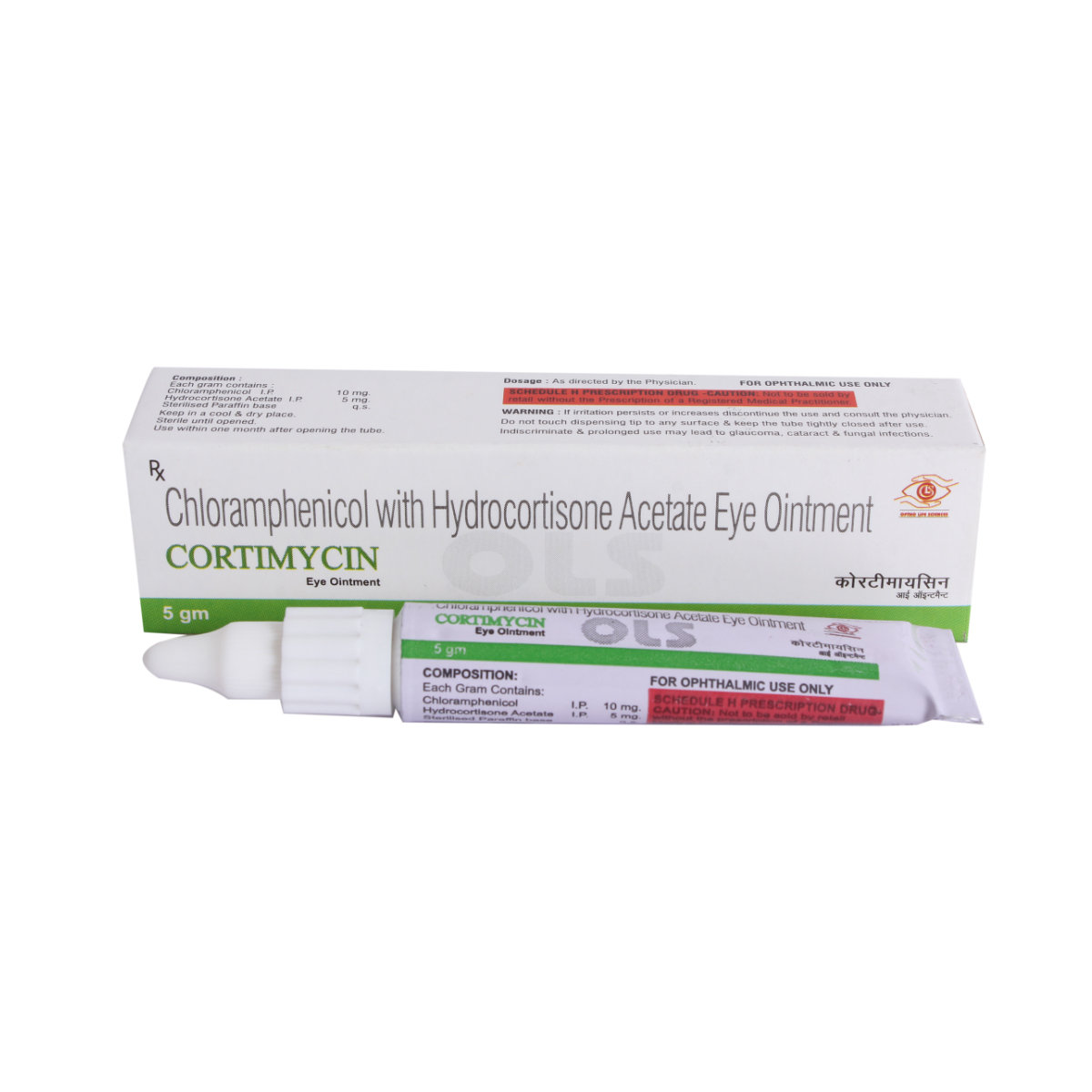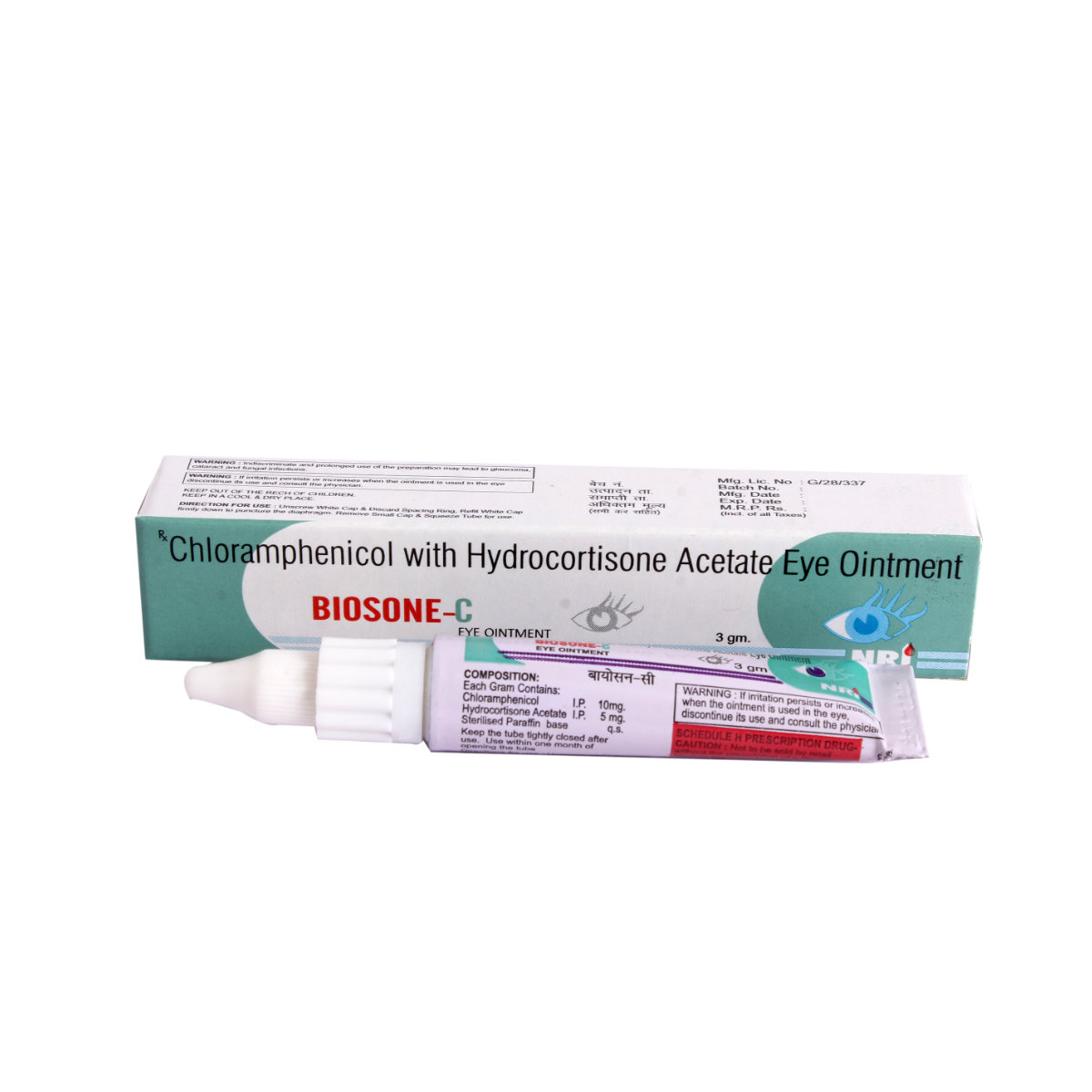Chlorocol-H Eye Ointment 3 gm
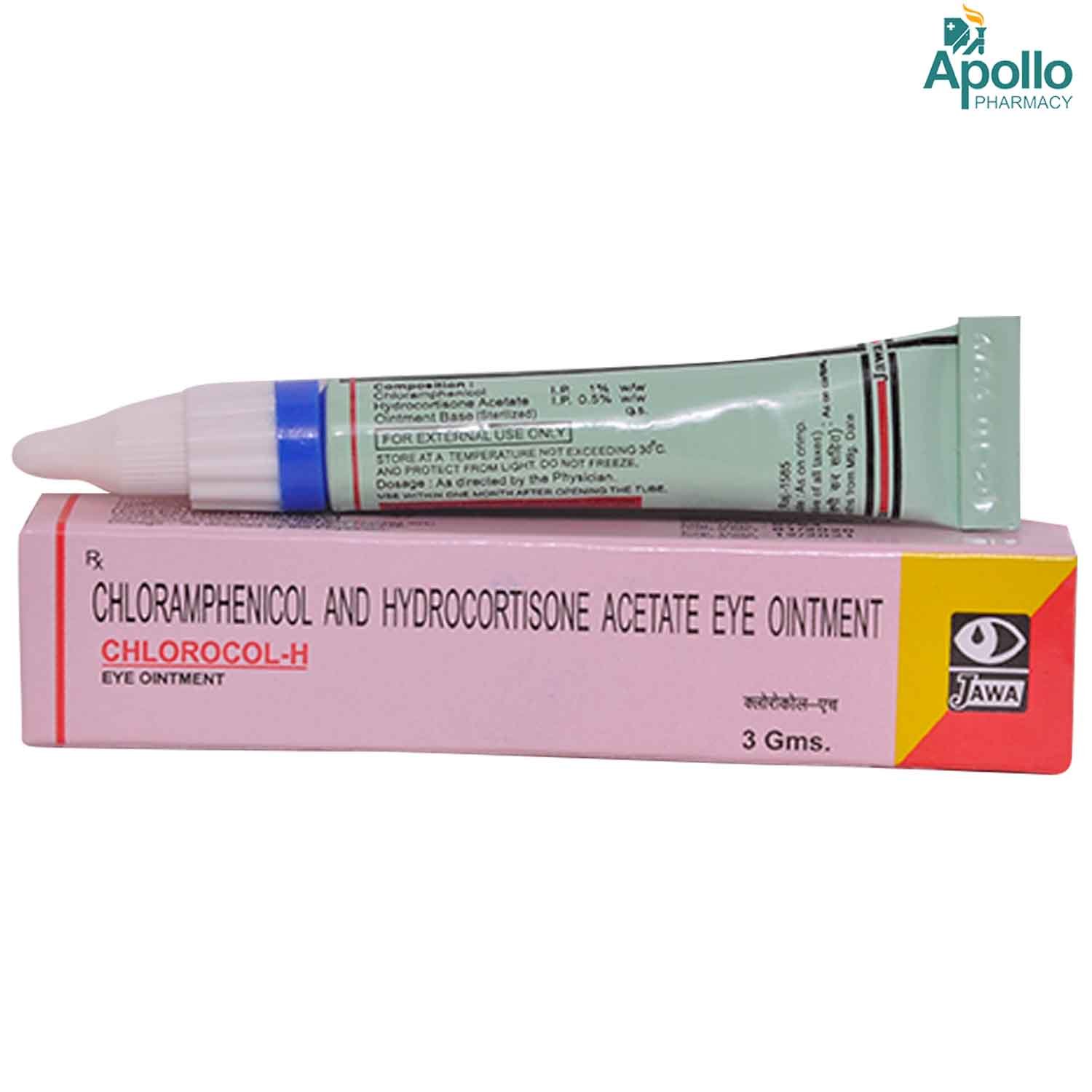
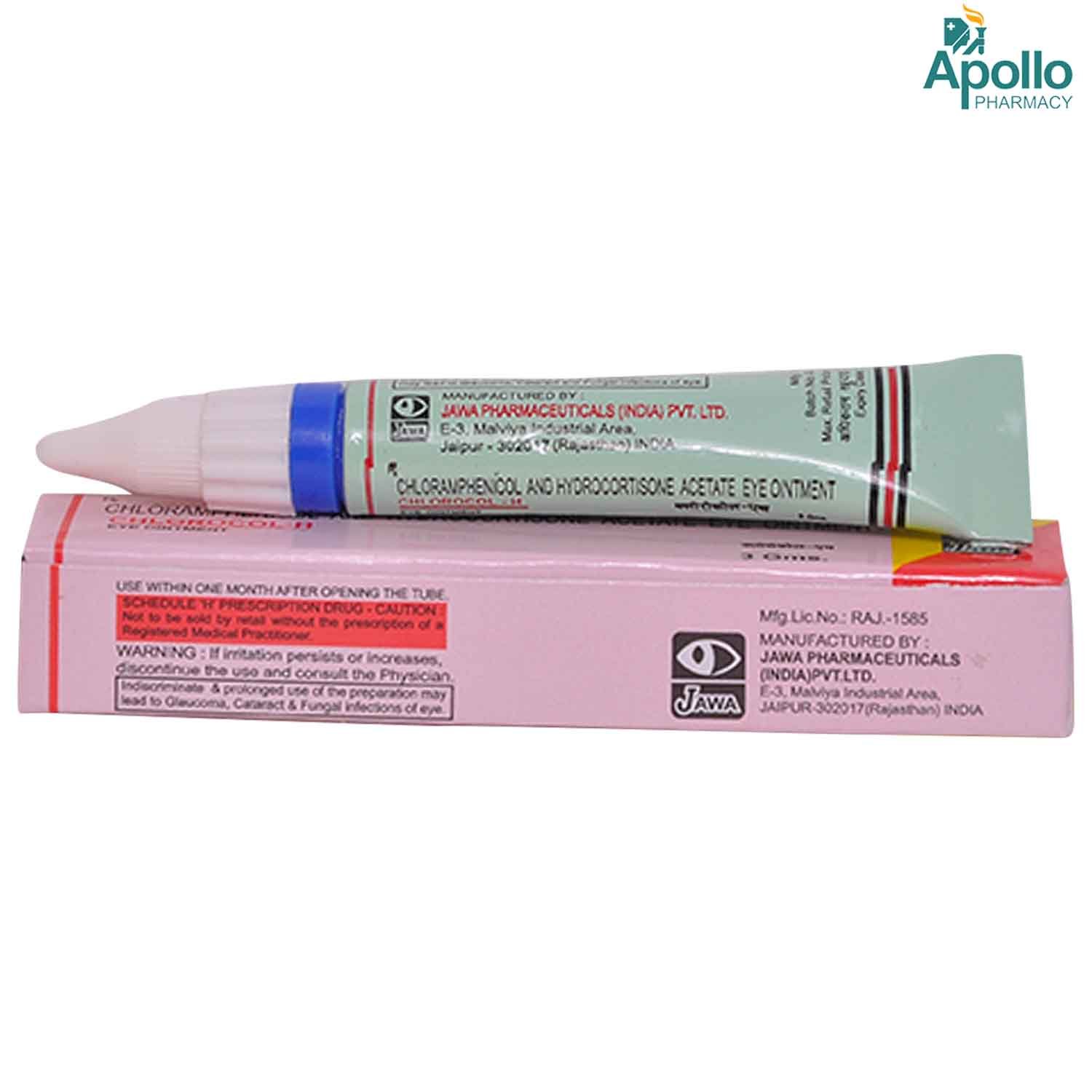


MRP ₹153.5
(Inclusive of all Taxes)
₹23.0 Cashback (15%)
Provide Delivery Location
Online payment accepted
 Prescription drug
Prescription drugWhats That
Composition :
Manufacturer/Marketer :
Consume Type :
Return Policy :
Expires on or after :
About Chlorocol-H Eye Ointment 3 gm
Chlorocol-H Eye Ointment 3 gm belongs to a group of medicines called 'antibiotics' primarily used to treat eye bacterial infections (optic). It is used for treating infectious diseases of the eyelids, the cornea (the transparent part that covers the front part of the eye), conjunctiva ( lines the inner surfaces of the eyelids), and anterior ocular segment(front of the eye). Bacterial eye infection occurs when harmful bacteria enter any part of the eyeball or surrounding tissues, including the cornea ( front surface of the eye) and lining of the outer eye and inner eyelids (conjunctiva). The common symptoms of eye infections are red eyes, pain, discharge, watery eyes, dry eyes, light Sensitivity, swollen eyes, itching, and blurred vision.
Chlorocol-H Eye Ointment 3 gm is a combination of two antibiotics: Hydrocortisone and Chloramphenicol. Hydrocortisone is a steroid medicine that works by calming down the body's immune response to decrease itching, pain, and swelling (inflammation) of the eye. Chloramphenicol is bacteriostatic, which prevents bacteria's growth by inhibiting the production of essential proteins necessary for bacteria to grow, multiply, and increase in numbers. Together as a combined product, Chlorocol-H Eye Ointment 3 gm prevents the spread of eye infections caused by a wide range of gram-negative bacteria causing eye infections.
Use Chlorocol-H Eye Ointment 3 gm as prescribed by your doctor. Chlorocol-H Eye Ointment 3 gm is only for use in the eyes. Do not swallow or inject Chlorocol-H Eye Ointment 3 gm. You are advised to use Chlorocol-H Eye Ointment 3 gm for as long as your doctor has prescribed it for you based on your medical condition. In some cases, you may experience redness, itching, irritation, burning or stinging sensation in the eyes, blurred vision, Sensitivity to light, eyelid swelling, itching, or crusting. Most of these side effects of Chlorocol-H Eye Ointment 3 gm do not require medical attention and gradually resolve over time. However, if the side effects worsen or persist, please consult your doctor.
Please tell your doctor if you are allergic to Chlorocol-H Eye Ointment 3 gm or any other medicines. Chlorocol-H Eye Ointment 3 gm should be used with caution in children. You are advised to consult a doctor if you are pregnant or breastfeeding. You are recommended not to use contact lenses during the course of Chlorocol-H Eye Ointment 3 gm as it may worsen the infection. If you get any new eye problem, an eye infection, or notice any allergic reactions such as itching or redness of the eye and skin rash, please consult your doctor immediately. You are advised to maintain a 10 minutes time gap between using Chlorocol-H Eye Ointment 3 gm and other eye drops. Please do not touch the container tip to the eye, eyelids, or surrounding areas as it may contaminate the Chlorocol-H Eye Ointment 3 gm and cause eye infections.
Uses of Chlorocol-H Eye Ointment 3 gm
Directions for Use
Medicinal Benefits
Chlorocol-H Eye Ointment 3 gm is a combination of two antibiotics: Hydrocortisone and Chloramphenicol. Hydrocortisone is a steroid medicine that works by calming down the body's immune response to decrease itching, pain, and swelling (inflammation) of the eye. Chloramphenicol is bacteriostatic, which prevents bacteria's growth by inhibiting the production of essential proteins necessary for bacteria to grow, multiply, and increase numbers. Together as a combined product, Chlorocol-H Eye Ointment 3 gm prevents the spread of eye infections caused by a wide range of gram-negative bacteria causing eye infections.
Storage
Drug Warnings
Chlorocol-H Eye Ointment 3 gm should not be used for an eye infection due to a virus, or another type of eye infection (e.g., tuberculosis, fungus), without consulting with the doctor. After applying Chlorocol-H Eye Ointment 3 gm, your vision becomes blurred for some time, so you are advised not to drive or use any machine or activity that needs a clear vision. Long-time use of Chlorocol-H Eye Ointment 3 gm can enhance the risk of e intraocular pressure (glaucoma) that can even damage the optic nerve and cause visual defects. Therefore, regular eye checkups are advised to monitor intraocular pressure. Chlorocol-H Eye Ointment 3 gm contains s benzalkonium chloride as an excipient that may discolour soft lenses, so try to avoid soft lenses for at least some time after using Chlorocol-H Eye Ointment 3 gm.
Drug-Drug Interactions
Drug-Drug Interactions
Login/Sign Up
Taking Flibanserin with Chlorocol-H Eye Ointment 3 gm may significantly increases the blood levels of flibanserin
How to manage the interaction:
Taking Chlorocol-H Eye Ointment 3 gm with Flibanserin is not recommended, but can be taken together if prescribed by a doctor. However, consult your doctor if you experience dizziness, lightheadedness, and fainting. Do not discontinue any medication without consulting a doctor.
Taking lomitapide with Chlorocol-H Eye Ointment 3 gm can significantly increase the blood levels of lomitapide.
How to manage the interaction:
Taking Chlorocol-H Eye Ointment 3 gm with Lomitapide is not recommended, but can be taken together if prescribed by a doctor. However, consult your doctor if you experience fever, chills, joint pain or swelling, unusual bleeding or bruising, skin rash, itching, loss of hunger, weakness, nausea, vomiting, dark colored urine, light colored stools, and yellowing of the skin or eyes. Do not discontinue any medications without consulting a doctor.
Taking Chlorocol-H Eye Ointment 3 gm with triazolam can increased the effects of Chlorocol-H Eye Ointment 3 gm.
How to manage the interaction:
Taking Triazolam with Chlorocol-H Eye Ointment 3 gm is not recommended, but can be taken together if prescribed by a doctor. In case you experience any unusual symptoms, consult a doctor. However, if you experience any unusual symptoms contact your doctor. Do not discontinue any medications without consulting a doctor.
Combining Mifepristone and Chlorocol-H Eye Ointment 3 gm can reduce the effects of Chlorocol-H Eye Ointment 3 gm.
How to manage the interaction:
Taking Chlorocol-H Eye Ointment 3 gm with Mifepristone is not recommended, consult a doctor before taking it. If you experience any symptoms, consult the doctor immediately. Do not stop using any medications without a doctor's advice.
Taking Iopamidol and Chlorocol-H Eye Ointment 3 gm together can increase the risk of seizures, meningitis, and inflammation of the spinal membranes.
How to manage the interaction:
Taking Chlorocol-H Eye Ointment 3 gm with Iopamidol is not recommended, please consult your doctor before taking it. If you experience any symptoms , consult the doctor immediately. Do not stop using any medications without a doctor's advice.
When Pimozide is taken with Chlorocol-H Eye Ointment 3 gm, the amount of Pimozide in the blood increases which increase the risk of an irregular heart rhythm and other side effects.
How to manage the interaction:
Although taking Chlorocol-H Eye Ointment 3 gm and Pimozide together can evidently cause an interaction, it can be taken if your doctor has suggested it. However, if you experience dizziness, lightheadedness, fainting, shortness of breath contact your doctor right away. Do not stop using any medications without first talking to your doctor.
Taking Naloxegol and Chlorocol-H Eye Ointment 3 gm can significantly increase the blood levels of naloxegol that may increase the risk of side effects.
How to manage the interaction:
Although taking Chlorocol-H Eye Ointment 3 gm and Naloxegol together can evidently cause an interaction, it can be taken if your doctor has suggested it. However, if you experience sweating, runny nose, or abdominal pain contact your doctor know right away. Do not stop using any medications without a doctor's advice.
Taking Chlorocol-H Eye Ointment 3 gm and Hydrocodone can significantly increase the blood levels of cariprazine.
How to manage the interaction:
Although taking Chlorocol-H Eye Ointment 3 gm with Hydrocodone can possibly result in an interaction, it can be taken if your doctor has advised it. If you're having any of these symptoms like dizziness, lightheadedness, headache, flushing, fainting, and heart palpitations feeling tired, having trouble moving, difficulty swallowing or having seizures, it's important to let your doctor know. Do not stop using any medications without a doctor's advice.
Co-administration of acalabrutinib with Chlorocol-H Eye Ointment 3 gm can significantly increases the blood levels of acalabrutinib.
How to manage the interaction:
Although there is a interaction between Chlorocol-H Eye Ointment 3 gm and Acalabrutinib, but it can be taken together if prescribed by your doctor. However, if you experience symptoms like paleness, fatigue, dizziness, fainting, unusual bruising or bleeding, fever, chills, diarrhea, sore throat, muscle aches, shortness of breath, red or inflamed skin, body sores, and pain or burning during urination, call your doctor. Do not stop using any medications without talking to a doctor.
Taking Chlorocol-H Eye Ointment 3 gm and Guanfacine may significantly increase the blood levels and effects of guanfacine.
How to manage the interaction:
There may be a possibility of interaction between Chlorocol-H Eye Ointment 3 gm and Guanfacine, but it can be taken if prescribed by a doctor. It's important to keep an eye on your blood pressure and heart rate. However, if you experience symptoms such as drowsiness, dizziness, lightheadedness, fainting, headache, palpitations consult a doctor. Do not discontinue any medications without consulting a doctor.
Drug-Food Interactions
Drug-Food Interactions
Login/Sign Up
Diet & Lifestyle Advise
- Wash your hands with soap and water frequently.
- Keep your clothes, towels, and bedsheets separate from others.
- Maintain good hygiene of contact lenses. Wash your hands thoroughly before wearing and after removing contact lenses.
- Avoid wearing contact lenses while swimming. In case you use them mistakenly, get a new pair.
- Wear protective eye gear if you are cycling or trekking through the forest.
- If you have irritation in the eyes, avoid rubbing them.
Side Effects of Chlorocol-H Eye Ointment 3 gm
- Redness in eyes
- Itching eyes
- Irritation, burning, or stinging sensation in the eyes
- Blurred vision
- Increased sensitivity to light
- Eyelid swelling
Habit Forming
Therapeutic Class
All Substitutes & Brand Comparisons
RX
Out of StockRenicol H Eye Ointment
Klar Sehen Pvt Ltd
₹35.55
(₹6.4/ 1gm)
86% CHEAPERRX
Out of StockChlodor H Eye Ointment
Salvador Visiontech Pvt Ltd
₹45
(₹8.1/ 1gm)
82% CHEAPERRX
Out of StockEyemycetine-H Eye Ointment 5gm
Arvincare
₹58
(₹10.44/ 1gm)
77% CHEAPER
Product Substitutes
Drug-Diseases Interactions
Drug-Diseases Interactions
Login/Sign Up
FAQs
You are advised not to use Chlorocol-H Eye Ointment 3 gm if you are allergic to hydrocortisone, chloramphenicol, or any of the other ingredients present in this medicine. With it, do not use Chlorocol-H Eye Ointment 3 gm if you have viral diseases of the cornea, eye infections caused by mycobacteria, and in children under 3 years of age.
It is advised to go for regular checkups of eyes as long time use of Chlorocol-H Eye Ointment 3 gm can increase the risk of intraocular pressure (glaucoma) that can even damage the optic nerve, cause visual field defects, and decreased visual acuity. Thus regular monitoring of intraocular pressure is necessary.
Usually, Chlorocol-H Eye Ointment 3 gm starts showing its effects just after using it. However, it will take some days to completely improving the eye condition.
Chlorocol-H Eye Ointment 3 gm is a combination of two antibiotics, namely: Hydrocortisone and Chloramphenicol. Hydrocortisone is a steroid medicine that works by calming down the body's immune response to decrease itching, pain, and swelling (inflammation) of the eye. Chloramphenicol is bacteriostatic, which prevents bacteria's growth by inhibiting the production of essential proteins necessary for bacteria to grow, multiply, and increase in numbers. Together as a combined product Chlorocol-H Eye Ointment 3 gm prevents the spread of eye infections caused by a wide range of gram-negative bacteria causing eye infections.
You are recommended to wash your hands first and tilt your head back and gently pull the lower eyelid downwards. Then, press the bottom of the bottle gently by holding it upside down to instill one drop into the affected eye without touching the tip of the bottle to the eye or surrounding areas in order to avoid contamination. Finally, replace the cap tightly after use. After applying Chlorocol-H Eye Ointment 3 gm, you are advised to apply to the corner of the eye by pressing a finger to stop eye drops from spreading into the rest of the body.
You are not recommended to wear contact lenses during the entire course of Chlorocol-H Eye Ointment 3 gm as it may worsen the infection. Therefore, you are advised to remove contact lenses before using Chlorocol-H Eye Ointment 3 gm and reinsert after 24 hours of finishing the course of Chlorocol-H Eye Ointment 3 gm.
You are recommended to maintain a minimum of 10 minutes time gap between using Chlorocol-H Eye Ointment 3 gm and other eye drops and administer eye ointments in the last.
Yes, Chlorocol-H Eye Ointment 3 gm may cause temporary blurred vision. Therefore, you are recommended to wait until your vision is clear before driving or operating heavy machinery.
You are not recommended to stop using Chlorocol-H Eye Ointment 3 gm without consulting your doctor as it may increase pressure in the eyes and may lead to loss of vision. Therefore, use Chlorocol-H Eye Ointment 3 gm for as long as your doctor has prescribed it, and if you experience any difficulty while taking Chlorocol-H Eye Ointment 3 gm, please consult your doctor.
Drug-Drug Interactions Checker List
- ATROPINE
- RITONAVIR
- COBICISTAT
- ERYTHROMYCIN
- TETRACYCLINE
- POLYMYXIN B
- AMOXICILLIN
- AMPICILLIN
- AZLOCILLIN
- CARBAMAZEPINE
- CHLORPROPAMIDE
Special Advise
Please consult an eye specialist if your eye infection persists or worsens after using Chlorocol-H Eye Ointment 3 gm for a week.
Disease/Condition Glossary
Bacterial eye infections: Bacterial eye infections occur when harmful bacteria enter any part of the eyeball or surrounding tissues, including the cornea ( front surface of the eye) and lining of the outer eye and inner eyelids (conjunctiva). The common symptoms of eye infections are red eyes, pain, discharge, watery eyes, dry eyes, light sensitivity, swollen eyes, itching, and blurred vision. Anytime any person can face an eye infection, one should visit an eye doctor for an eye exam to identify the condition. Self-diagnosis can delay effective treatment and even can cause permanent vision loss. Conjunctivitis or pink eye is s a common, highly contagious bacterial eye infection that generally spreads in children in classrooms and similar environments. The transparent layer's inflammation (conjunctiva) lines the eyelid and covers the white part of the eyeball. It causes bacterial infection, thereby causing inflamed conjunctiva, making the white part of the eyeball look pink.

Have a query?
Buy best Ocular products by
Entod Pharmaceuticals Ltd
Ajanta Pharma Ltd
Sunways (India) Pvt Ltd
Sun Pharmaceutical Industries Ltd
Cipla Ltd
Micro Labs Ltd
Allergan Healthcare India Pvt Ltd
Intas Pharmaceuticals Ltd
Raymed Pharmaceuticals Ltd
Nri Vision Care India Ltd
FDC Ltd
Jawa Pharmaceuticals India Pvt Ltd
Indoco Remedies Ltd
Sapient Laboratories Pvt Ltd
Senses Pharmaceuticals Pvt Ltd
Centaur Pharmaceuticals Pvt Ltd
Neomedix Healthcare India Pvt Ltd
Aromed Pharmaceuticals
Optho Remedies Pvt Ltd
Aurolab
Austrak Pvt Ltd
Lupin Ltd
Mankind Pharma Pvt Ltd
Zivira Labs Pvt Ltd
Optho Pharma Pvt Ltd
Synovia Life Sciences Pvt Ltd
Akumentis Healthcare Ltd
Eyekare
His Eyeness Ophthalmics Pvt Ltd
Protech Remedies Pvt Ltd
Runyon Pharmaceutical Pvt Ltd
Alcon Laboratories Inc
Syntho Pharmaceuticals Pvt Ltd
Alembic Pharmaceuticals Ltd
Bell Pharma Pvt Ltd
Klar Sehen Pvt Ltd
Sentiss Pharma Pvt Ltd
Irx Pharmaceuticals Pvt Ltd
Optho Life Sciences Pvt Ltd
Phoenix Remedies Pvt Ltd
Alkem Laboratories Ltd
Doctor Wonder Pvt Ltd
Hicare Pharma
Ipca Laboratories Ltd
Neon Laboratories Ltd
Okulus Drugs India
Pharmtak Ophthalmics (I) Pvt Ltd
Berry & Herbs Pharma Pvt Ltd
Glow Vision Pharmaceuticals
Kaizen Drugs Pvt Ltd
Choroid Laboratories Pvt Ltd
Indiana Opthalamics Pvt Ltd
Optica Pharmaceutical Pvt Ltd
Pharmatak Opthalmics India Pvt Ltd
Samarth Life Sciences Pvt Ltd
Vibgyor Vision Care
Mofon Drugs
Novartis India Ltd
Pharmia Biogenesis Pvt Ltd
Zydus Cadila
Appasamy Ocular Devices Pvt Ltd
Leeford Healthcare Ltd
Medivision Pharma Pvt Ltd
Orbit Life Science Pvt Ltd
X-Med Royal Pharma Pvt Ltd
Zee Laboratories Ltd
Aarma Laboratories
Guerison MS Inc
Laborate Pharmaceuticals India Ltd
Xtas Pharmaceuticals
Accurex Biomedical Pvt Ltd
Blucrab Pharma Pvt Ltd
Does Health Systems Pvt Ltd
Flagship Biotech International Pvt Ltd
Lavue Pharmaceuticals Pvt Ltd
Nutrilis Healthcare Pvt Ltd
Ursa Pharm India Pvt Ltd
Vee Remedies
Vyonics Health Care India Pvt Ltd
Warren Pharmaceuticals Pvt Ltd
Abbott India Ltd
Accvus Pharmaceuticals
Akums Drugs & Pharmaceuticals Ltd
Cadila Healthcare Ltd
Carevision Pharmaceuticals Pvt Ltd
Dey's Medical Stores (Mfg) Ltd
East West Pharma India Pvt Ltd
Eyedea Pharmaceuticals Pvt Ltd
Nimbus Healthcare Pvt Ltd
Ocuris Pharmaceuticals Pvt Ltd
Sherings Pharmaceuticals
Tarks Pharmaceuticals Pvt Ltd
Vcan Biotech
Vision Medilink
Aice Health Care Pvt Ltd
Appasamy Pharmaceuticals Pvt Ltd
Asperia Lifescience Pvt Ltd
Beatum Healthcare Pvt Ltd
East India Pharmaceutical Works Ltd
Grevis Pharmaceutical Pvt Ltd
Alcohol
Safe if prescribed
The interaction of alcohol with Chlorocol-H Eye Ointment 3 gm is unknown. However, as a precautionary measure, limit or avoid the consumption of alcohol.
Pregnancy
Caution
The safety of Chlorocol-H Eye Ointment 3 gm in pregnancy is unknown, so it is advised that you should consult with a doctor as Chlorocol-H Eye Ointment 3 gm can only be given after careful consideration of the benefit/risk ratio.
Breast Feeding
Caution
Chlorocol-H Eye Ointment 3 gm should not be used in nursing mothers unless clearly necessary. So, inform your doctor if you are a nursing mother. Your doctor will weigh the benefits and potential risks before prescribing Chlorocol-H Eye Ointment 3 gm.
Driving
Unsafe
Chlorocol-H Eye Ointment 3 gm may cause blurred vision and reduced visual acuity, immediately after its usage so one should avoid the ability to drive and use machines.
Liver
Caution
Dose adjustment may be needed. Please consult your doctor before taking Chlorocol-H Eye Ointment 3 gm if you have liver impairment/liver disease.
Kidney
Caution
Dose adjustment may be needed. Please consult your doctor if you have any concerns regarding this or if you have kidney impairment/kidney disease before taking Chlorocol-H Eye Ointment 3 gm.
Children
Unsafe
Chlorocol-H Eye Ointment 3 gm should not be used in children below three years of age.


